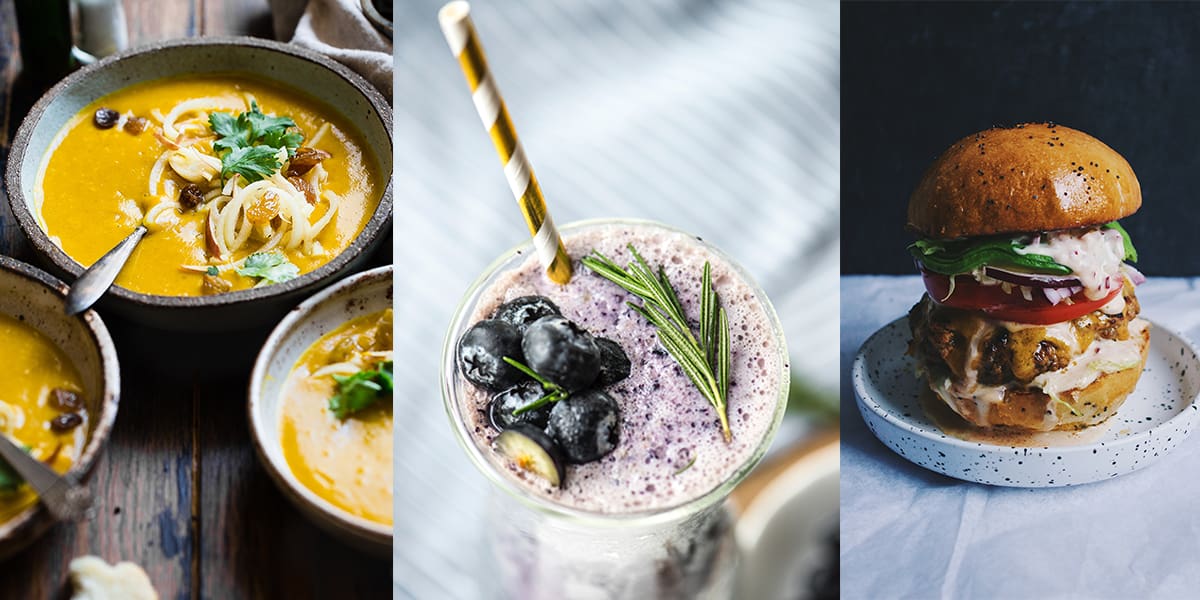
Following food and drink trends can be fun, but it’s more than a pastime for hotel teams.Travelers are showing increasingly discerning tastes, and younger generations, including millennials, are placing new emphasis on things like local sourcing and convenient eats.Identifying and adopting those trends that are relevant for a given hotel property and its guests, however, is far from simple.As F&B continues to be a key point of difference for hotels, and touting what makes the guest experience unique is the essence of hotel and resort marketing, Screen Pilot frequently researches top trends.Here are nine food and beverage trends to watch in 2019.

Hyper-Local Supply Chains
Diners increasingly want to know where their food comes from and, whenever possible, eat local. Data shows a majority of consumers across the income spectrum are willing to pay more for locally sourced foods.Restaurants are obliging by sourcing whatever they can from their community, and sharing the source with their guests, with menu notes citing the farm their produce was sourced from, or the name of the boat that hauled in their fresh catch. Hotels who struggle to find what they need have gone so far as to cultivate their own gardens and orchards, or even maintain their own apiary.
Paper Straws
As plastic refuse continues to pollute the world’s oceans, hotels are resorts are seeking ways to eliminate one-time use items such as straws, toothpicks and stir sticks. (An estimated 500 million plastic straws alone are used each day.)Benchmark Global Hospitality, Four Seasons, Hyatt, Hilton and Marriott International are among the biggest hospitality brands that have banned plastic straws outright, and countless independent properties are following suit. For guests that request one, biodegradable paper straws are the earth-friendly alternative.
Experience-Based Dining
Why order room service when you can enjoy traditional Icelandic dishes and wine from an 800-year-old frozen lava cellar while surveying a volcanic landscape.More and more customers are willing to pay for unique dining experiences. Instead of serving generic fare in an uninspired atmosphere, hotels are crafting dining encounters that embrace the culture, tradition and even geography of their community. From how each food is prepared, to the utensils provided, even the posture assumed at the table, restaurants are finding unique ways to making eating an experience.
Fast Casual
While there’s a growing appetite for experience-based dining, there’s also a broader consumer trend of demanding ever-faster service. Think of the waves of self-service kiosks and easy-pay systems introduced in recent years.Here, again, younger generations are disrupting tradition. Some 55% of millennials say convenience is a top driver when buying food, as opposed to baby boomers, who say taste matters more. Hotels are taking note of the shift, and finding ways to provide quick casual dining alternatives. In addition to grab-and-go outlets at many hotels, menus are noting “made in a minute” items otherwise explicitly outlining selections that can be quickly prepared and served on the fly.
Superfoods
Avocados, blueberries, beets; so-called superfoods are more popular than ever.In response, restaurants are going out of their way to craft menu selections that are rich in probiotics, fresh spices, and “wonder” herbs. Some are adding superfoods to traditional recipes, while others are dreaming up entirely new “superfood” dishes, such as the Superfood Salad with Salmon at the bistro at K+K Hotel George, Kensington.
Classics Made New
Staples of the food industry such as pizza and pasta are continually being reimagined, whether by introducing a cauliflower base for your chicken alfredo or turning your traditional deep-dish pizza into a deep-fried delicacy.Adopting “new” ingredients to make old favorites unique has become a winning strategy for many hotels and restaurants, and is a trend we see continuing for the foreseeable future.
Zero Waste Dining
Screen Pilot noted the “zero food waste” trend in our 2018 F&B trend rundown but felt it worth noting again this year.Restaurants, by their very nature, make a ton of trash. Many are finding creative ways to limit food waste, from utilizing items one would traditionally toss (think strawberry tops or lemon peel) to offering guests entrées in incremental portion sizes. It’s a trend that can not only help a restaurant align its offerings with customer values, but it can also ultimately help the company save money.
Food Safety
Food, in general, is safer than ever before. Still, the CDC estimates that about 1 in 6 people get a foodborne illness each year.Travelers – eating in unfamiliar restaurants and hotels – want to be confident that their food comes from reputable sources and is prepared in a hygienic, sanitary way. Restaurants are meeting this expectation by carefully selecting their suppliers, and finding ways to make their food preparation transparent, such has including an “open kitchen” concept at their outlets.
Plant-Based Foods
Make no mistake, the plant-based revolution is fully underway.Utilizing vegan cheese, fermented foods and meat substitutes, creative chefs are expanding their vegan and raw dish offerings. Some seek to put a spin on the classics (spaghetti and “beet balls” anyone?), while others develop entirely new recipes. With an increasing number of people embracing plant-based foods, in-part because they say it makes them feel healthier, it’s a trend likely to become outright mainstream.
Did you enjoy the read?
Get original hospitality industry insights delivered to your inbox. Sign up to receive Screen Pilot’s #TrendingNow Newsletter.






